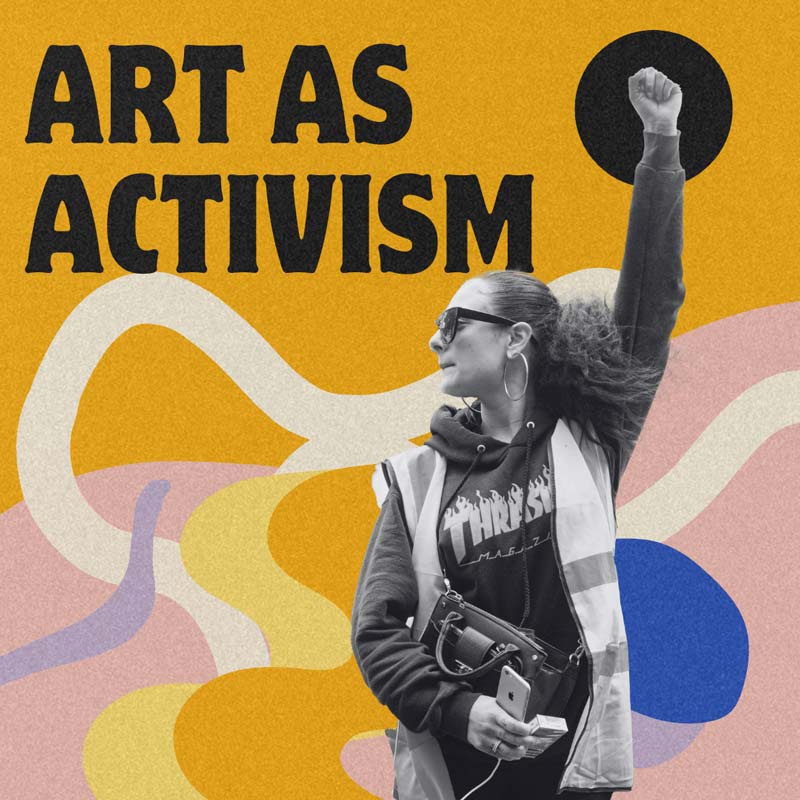CATEGORIES
#Breaking Stereotypes #Social Impact #Young LeadersOverview:
- Reclaiming Narratives and Shattering Stereotypes: Guerrilla Girls and Fafi address sexism through street art; Lola Álvarez Bravo celebrates women’s strength and explores gender identity.
- Amplifying Marginalized Voices: Artists like Amrita Sher-Gil and Arundhati Roy use their work to depict the struggles of marginalized communities, challenging societal norms.
- The Ripple Effect: Female artists’ impact extends beyond their individual creations, inspiring movements like #MeToo and raising awareness.
- Conclusion: Through vulnerability and personal storytelling, artists like Zanele Muholi foster empathy and encourage collective action.
Time and again, art has served as a powerful tool for challenging the status quo and sparking crucial conversations about social justice. In recent years, female artists have been at the forefront of this movement, leveraging their creativity to tackle pressing issues. From the streets to galleries, these artists are employing diverse mediums and voices to address systemic inequalities and empower marginalized communities. In this article, we will discuss how female artists are using their work to drive social change. For, the world has seen a paradigm shift from “I’m just a girl” to “Who runs the world? Girls!”
Reclaiming narratives and shattering stereotypes
Artists like Guerrilla Girls and Fafi have long used street art and subversive interventions to confront sexism and discrimination in the art world. The Guerrilla Girls employ culture jamming in the form of posters, books, billboards, lectures, public appearances to expose disparities. Fafi, meanwhile, defies all street art conventions with self-assured femininity. If she uses female stereotypes for her Fafinettes (her curvy feminine characters) she only does it to empower women.

Today, a new generation of artists like Lola Álvarez Bravo and Nadia Lee Cohen are building on this legacy. Bravo’s photorealistic paintings explore themes of gender identity and societal expectations. Cohen’s vibrant murals celebrate the strength and resilience of women of color. By reclaiming spaces and disrupting dominant narratives, these artists create platforms for diverse voices. They also challenge ingrained societal biases.
Female Artists Driving Social Change: Amplifying Marginalized Voices
Art becomes a megaphone for those whose voices are often silenced. Artists explore sensitive topics, push boundaries, and spark uncomfortable conversations. Amrita Sher-Gil, one of the most important painters of modern India, was known for her vivid and powerful depictions of Indian life and culture. Sher-Gil depicted both beauty and hardships, particularly focusing on the plight of women. This social commentary made her work powerful and thought-provoking. Arundhati Roy‘s activism and artistry are deeply intertwined with her writing. She is a powerful voice for social justice. Issues like caste discrimination, poverty, and environmental destruction come alive in her work. Prominent artists like Amrita Sher-Gil and Arundhati Roy use their work to explore sensitive topics. They spark dialogue on social justice issues and offer nuanced reflections on real-life struggles faced by marginalized communities.

The Ripple Effect: Beyond Individual Expression
The impact of female artists as activists extends far beyond their individual creations. Their work inspires movements like #MeToo and influences policy decisions. Their courage and creativity empower others to question the status quo, demand change, and build a more equitable future.

Many female artists are employing vulnerability and personal storytelling to foster empathy and connection. The raw and intimate photographs of Zanele Muholi document the experiences of LGBTQIA+ individuals in South Africa. The performances by Marina Abramović and Hannah Wilke push the boundaries of self-exploration and challenge traditional notions of femininity.
By sharing their own experiences, these artists create spaces for vulnerability and encourage collective action towards more inclusive and understanding communities.
Conclusion:
Female artists use their work to drive social change by employing vulnerability and personal storytelling to foster empathy and connection. The raw and intimate photographs of Zanele Muholi document the experiences of LGBTQIA+ individuals in South Africa, while performances by Marina Abramović and Hannah Wilke push the boundaries of self-exploration and challenge traditional notions of femininity. By sharing their own experiences, these artists create spaces for vulnerability and encourage collective action towards more inclusive and understanding communities. Together, we can create a world where art not only reflects reality but actively shapes a future where justice and equality reign supreme.


